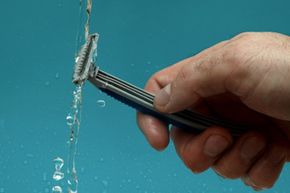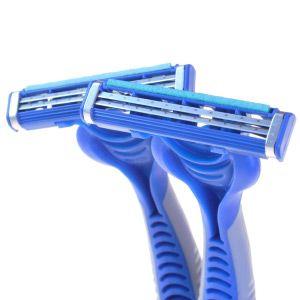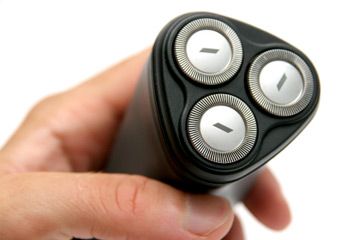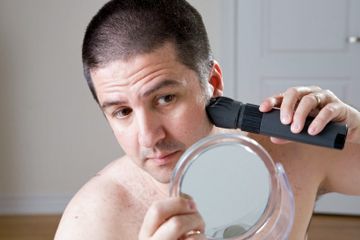Everyone has his individual shaving style and technique, and what works for you is usually what's best for you -- but if you can improve your game, why not give it a try? To get a clean, close, wet shave, start with a sharp razor and shave with gentle strokes. The razor blade should be sharp enough to slice hairs easily with one stroke, and you shouldn't have to push it against your skin. To get even closer, tightly stretch areas of your skin as you shave them. It's easier to glide your razor over a flat, smooth area than over skin that's slack or uneven.
Also, pay attention to how your hair grows and use it to your advantage. Shave first in the direction of your hair growth (this is usually downward) and then again in the other direction (against the grain). Rinse the blade in hot water often, preferably after every stroke, and rinse your face with cool water to close your pores when you're done.
If your skin is prone to developing shaving bumps, also known as ingrown hairs or pseudofolliculitis barbae, you may need to shave differently. Listen up, because changing your shaving technique may help prevent the problem. To minimize the likelihood of ingrown hairs, shave after you shower -- the steam from the hot water will help to open your pores and soften your hair. While shaving, use as few strokes as possible, don't pull your skin taut as you shave and always shave in the same direction as the hair growth. You won't get as close a shave this way, but you'll exchange a five o'clock shadow for fewer red, inflamed bumps.
Alternatively, if you're prone to ingrown hairs or shaving nicks, consider an electric razor. Electric razors and shavers won't give you the same close shave as a multiblade disposable or a straight razor, but you don't need shaving creams or water to get the job done. There are some electric shavers that are made to be wet- and dry-shave friendly -- be sure to read the manual for your specific shaver.




